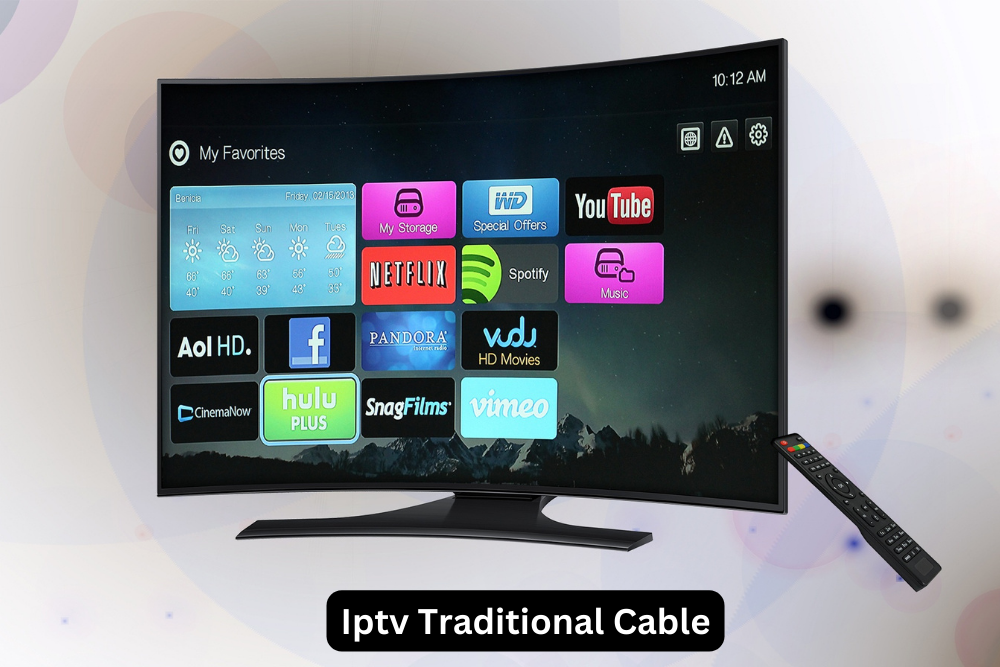In the ever-evolving world of entertainment, the way we consume television has undergone a dramatic transformation. From the days of traditional cable TV to the rise of Internet Protocol Television (IPTV), the landscape of home entertainment has shifted significantly. This article explores the differences between IPTV and Iptv Traditional Cable their advantages and disadvantages, and what the future holds for both technologies.
What is Traditional Cable TV?
Traditional cable TV has been a staple in households for decades. It delivers television programming through coaxial cables or fiber-optic lines, which are connected to a set-top box provided by the cable company. This technology has been the primary method of accessing a wide range of channels, including local, national, and international networks.
How Does Traditional Cable TV Work?
Cable TV operates by transmitting analog or digital signals through a network of cables. These signals are decoded by the set-top box, allowing users to watch their favorite shows, movies, and live events. Cable providers often bundle channels into packages, giving consumers access to a variety of content for a monthly fee.
Advantages of Traditional Cable TV
-
Reliability: Cable TV is known for its consistent signal quality, even during adverse weather conditions.
-
Local Channels: Cable providers often include local channels, which are essential for news and regional programming.
-
Bundled Services: Many cable companies offer bundled packages that include internet and phone services, providing convenience and cost savings.
Disadvantages of Traditional Cable TV
-
Limited Flexibility: Cable TV requires a physical connection, limiting where you can watch TV.
-
Higher Costs: Cable packages can be expensive, especially when compared to streaming services.
-
Equipment Dependency: Users need a set-top box and sometimes additional equipment, which can be cumbersome.
What is IPTV?
Internet Protocol Television (IPTV) is a modern alternative to traditional cable TV. Unlike cable, IPTV delivers television content over the internet, allowing users to stream live TV, on-demand videos, and other multimedia content directly to their devices.
How Does IPTV Work?
IPTV uses internet protocols to transmit video content. Instead of relying on cables, it streams data through broadband connections. Users can access IPTV services on various devices, including smart TVs, smartphones, tablets, and computers. IPTV providers often offer apps or platforms where users can browse and watch content.
Advantages of IPTV
-
Flexibility: IPTV allows users to watch content on multiple devices, providing greater flexibility and convenience.
-
On-Demand Content: IPTV platforms often include extensive libraries of on-demand movies, TV shows, and other content.
-
Cost-Effectiveness: Many IPTV services are more affordable than traditional cable packages, especially for users who only want specific channels or content.
-
Global Access: IPTV enables users to access international channels and content from anywhere in the world.
Disadvantages of IPTV
-
Internet Dependency: IPTV requires a stable and high-speed internet connection. Poor connectivity can lead to buffering and interruptions.
-
Content Restrictions: Some IPTV services may have geo-restrictions, limiting access to certain content based on the user's location.
-
Technical Issues: Users may encounter technical challenges, such as app compatibility or device limitations.
IPTV vs. Traditional Cable TV: Key Differences
1. Content Delivery
-
Cable TV: Relies on physical cables to transmit signals.
-
IPTV: Uses the internet to stream content.
2. Device Compatibility
-
Cable TV: Typically requires a set-top box and a TV.
-
IPTV: Can be accessed on a wide range of devices, including smart TVs, smartphones, and tablets.
3. Cost
-
Cable TV: Often comes with higher monthly fees and additional equipment costs.
-
IPTV: Generally more affordable, with flexible subscription options.
4. Content Availability
-
Cable TV: Offers a fixed set of channels based on the package.
-
IPTV: Provides access to a broader range of content, including on-demand and international options.
The Future of Television: IPTV or Cable?
As technology continues to advance, the future of television seems to be leaning toward IPTV. The flexibility, affordability, and convenience of IPTV make it an attractive option for modern consumers. However, traditional cable TV still holds a significant market share, particularly among older generations and those who value reliability and local programming.
The rise of streaming services and the increasing availability of high-speed internet are driving the growth of IPTV. At the same time, cable providers are adapting by offering hybrid services that combine traditional cable with internet-based features.
Conclusion
Both IPTV and traditional cable TV have their unique strengths and weaknesses. While cable TV offers reliability and local content, IPTV provides flexibility, affordability, and a vast array of on-demand options. The choice between the two ultimately depends on individual preferences, budget, and viewing habits.
As the entertainment industry continues to evolve, it's clear that IPTV is poised to play a dominant role in the future of television. However, traditional cable TV is unlikely to disappear entirely, as it continues to cater to a specific audience. Regardless of which option you choose, the world of television is more diverse and accessible than ever before.
